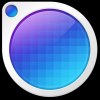
- MAC DWELLCLICK DOWNLOAD HOW TO
- MAC DWELLCLICK DOWNLOAD SOFTWARE DOWNLOAD
- MAC DWELLCLICK DOWNLOAD SOFTWARE
- MAC DWELLCLICK DOWNLOAD PC
- MAC DWELLCLICK DOWNLOAD WINDOWS
Your computer responds to its inputs based on how it has been programmed to interpret the information.įor an auto clicker, it tells your computer that anytime a cursor moves to another position on the computer screen and the cursor is left to stand on an icon, it should automatically click it.
MAC DWELLCLICK DOWNLOAD SOFTWARE
Here are the best examples of software downloading sites where you can get a free auto clicker.
MAC DWELLCLICK DOWNLOAD SOFTWARE DOWNLOAD
To get an automatic clicker on a laptop, go to a software download site and install one. There are many free auto clickers to use. However, the second is the most common and involves downloading an auto clicker.
MAC DWELLCLICK DOWNLOAD PC
All you have to do is enable auto-click if your PC has an inbuilt auto-click setting. The first is the least common way and doesn’t involve you downloading an auto-clicker. Generally, you can make your computer mouse perform an auto click in two main ways.
MAC DWELLCLICK DOWNLOAD HOW TO
MAC DWELLCLICK DOWNLOAD WINDOWS
How To Make a Mouse Click Automatically on a Windows PC.Method #2: Via a Third-Party Auto Click Software.How To Make a Mouse Click Automatically on a Chrome PC.How To Make a Mouse Click Automatically.But you should give it a try if you’re looking for something new. For users who don’t mind change and innovation, this utility will probably make using a Mac even easier for people like me, change will be difficult especially when you’re really used to the standard way of clicking and selecting files. You can read more to get the hang of it in DwellClick’s online User Guide.Īt $11.99 in the App Store, DwellClick doesn’t come cheap but it’s undoubtedly an app that dramatically changes the way you control your computer. It sounds complicated but it’s actually very intuitive once you’ve found your perfect delay time. Similarly, hitting the Fn key when DwellClick’s running will activate an iOS-like popup menu to double-lick, drag and control-click.

Or, you can simply double-press one of those keys to “lock it” with a visual cue displayed on screen. You can set a click delay time in the settings, as well as disable automatic clicking and dragging, or customize the color of the blinking light that tells you DwellClick has clicked something on screen or started dragging an element around.ĭwellClick also plays well with modifier keys and control-clicking: when the app’s turned on, you can hit keys like Cmd, Option or Control to tell DwellClick they should go with the next click. In fact, I had a hard time trying not to click everything on screen in my first tests when I was just moving the cursor with DwellClick enabled – as you move and stop the cursor, DwellClick clicks. Those who are used to clicks and scrolling after years of computing won’t probably appreciate the new ideas brought along by DwellClick. DwellClick wants you to save hundreds of clicks every day, but it’s clearly not an app for everyone. Same applies for dragging windows and files or scrolling a page: as DwellClick is smart enough to recognize whether you’re hovering over an app window, a folder or a scrollbar, the utility will understand what you want to do and contextually change its functionality to let you move a window, scroll without releasing you hand from the trackpad, and so forth. Instead of clicking you move and point, and DwellClick will take care of the actual clicking for you. DwellClick, a new app available on the Mac App Store, provides a way to change the default behavior of clicking and dragging on OS X by enhancing the experience with less clicks and button pressing.ĭwellClick basically enables clickless operations on a computer. Many say Lion is going the way of iOS with the addition of gestures and iOS-like commands, but as long as computers have non-touch displays the fundamental concept of indirect clicking and controls will live. Of course iOS devices have changed this: with multi-touch gestures and displays, the user no longer moves something on screen, he touches the screen. In the same way Steve Jobs saw the first mouse device almost thirty years ago and was impressed by the concept of interacting with items on screen, today’s pointing devices retain the original concept of a user’s hand and fingers touching an external or embedded surface / buttons to perform actions like scrolling, selection, clicks and drags. In fact, moving the cursor on screen and clicking and selecting and dragging stuff around hasn’t changed for decades.

Whether your main desktop setup consists of an iMac rocking a Magic Trackpad or Magic Mouse or you’re more of a MacBook user relying on the built-in glass trackpad, input methods on OS X machines don’t change.


 0 kommentar(er)
0 kommentar(er)
